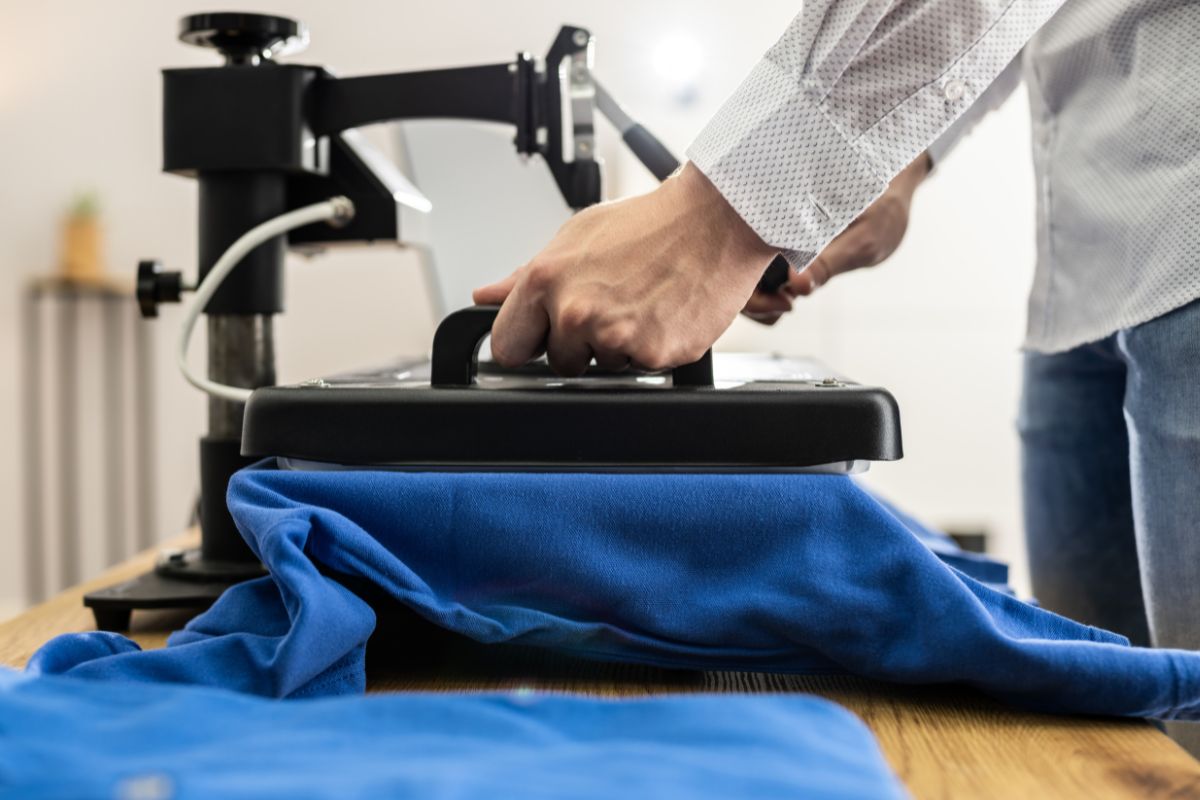When exploring the diverse world of shirt printing, you’ll come across various methods that offer unique benefits and suit different requirements. Screen printing, for example, is a popular technique known for producing vibrant and durable prints. This process involves creating a stencil (or screen) and using it to apply layers of ink on the printing surface. Each color is applied using a separate stencil, one at a time, to achieve the final look.
Direct to garment (DTG) printing is a newer method that works much like a inkjet printer. It allows for detailed designs and a wide range of colors to be printed directly onto the shirt, making it a great option for complex graphics. With DTG, there’s a quicker setup time, which makes it ideal for small batch orders or designs with multiple colors.
Another method is dye sublimation, beneficial especially for polyester fabrics. The process involves turning a solid dye into a gas without passing through a liquid state, therefore binding it to the fabric and ensuring a print that won’t fade easily. Dye sublimation is best for full-shirt prints and gives a high-quality, photographic finish.
Overview of Shirt Printing Methods
When you explore shirt printing, you’re delving into a world of technology and creativity. Each method varies in technique, cost-efficiency, and suitability for different designs and fabrics.
Screen Printing
Screen Printing is a process where ink is pushed through a mesh stencil onto fabric. It’s a popular choice for high-volume orders, especially because the ink in screen printing adheres well to the shirt, allowing for vibrant and durable designs. However, the setup process is labor-intensive, making it less cost-effective for small batches.
Heat Press Printing
With Heat Press Printing, designs are transferred to your shirt using heat and pressure. This method is ideal for small quantities and on-demand printing. It’s also a go-to forcustomization, as it easily affords the application of special materials like vinyl onto the fabric. But keep in mind, the longevity of heat-pressed designs can be less when compared to other methods.
Direct-to-Garment Printing
Direct-to-Garment Printing (DTG) is akin to using a printer for your shirts, where the inkjet technology directly applies the ink to the fabric. DTG is excellent for intricate designs with a wide range of colors. It’s also relatively quick and efficient for small runs. However, the initial cost can be high due to the need for advanced printers.
Sublimation Printing
Sublimation Printing stands out for producing photorealistic prints. In this process, dye turns into gas and bonds to polyester, resulting in fade-resistant and vibrant prints. However, it’s restricted to light-colored, 100% polyester garments, limiting its versatility.
Other Printing Techniques
Numerous Other Printing Techniques, such as block printing or flocking, offer diverse texture and design opportunities. These methods can vary widely in cost, implementation, and fabric compatibility. It’s wise to evaluate these niche techniques based on your project’s unique requirements.
Each shirt printing method presents its own set of advantages, dependent on the needs of your project. Whether you prioritize cost, quality, fabric type, or design complexity, understanding these methods empowers you to select the best fit for your shirt printing goals.
Preparing the Design
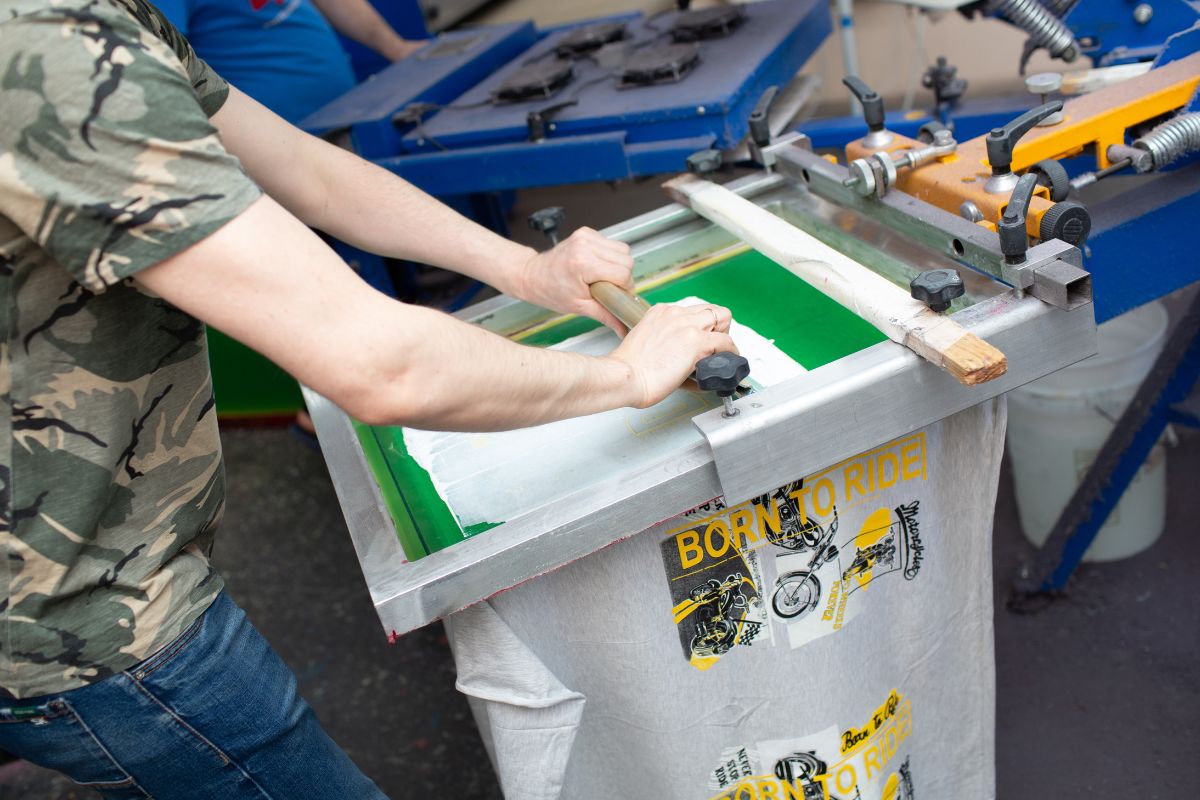
Before you start printing your shirts, it’s essential to prepare your design properly. Whether you’re using a stencil or a digital design, the quality of the end product greatly depends on the precision with which you handle this stage. Each method requires attention to detail and a good understanding of the tools and processes involved.
Stencil Creation
To create a stencil for screen printing, you first need to finalize your design. Using an inkjet printer, print the design onto a transparent film to ensure that your stencil will be accurate to your original design. The impermeable areas of your stencil block ink from passing through the screen and depositing onto your shirt, leaving a crisp, clear image where you want it.
- Tools Needed:
- Inkjet printer
- Transparent film
- Screen with fine mesh
- Photo-sensitive emulsion
Digital Design Process
For digital design processes such as DTG (Direct to Garment) or sublimation printing, you’ll approach the design preparation differently. Start by creating your designs with software that allows high-resolution outputs. An inkjet printer or a sublimation printer then reproduces this design onto the garment with a high level of detail and an extensive color palette.
- Steps for Preparation:
- Design your image using graphic design software.
- Ensure that your digital file is in the correct format for printing.
- Use a printer that can handle the intricacies of your design, such as a sublimation printer for dye-sublimation or an inkjet printer for DTG.
Materials and Fabrics
When it comes to t-shirt printing, the material of your t-shirt and the ink used can significantly affect the outcome. Your choice will determine the vibrancy, feel, and durability of the printed design.
Choosing the Right T-Shirts
Cotton T-Shirts: Cotton is a breathable, soft fabric ideal for screen printing and direct-to-garment printing. It holds color well, making it a popular choice for various designs.
- Pros:
- Comfortable and breathable
- Retains ink color over time
- Cons:
- Can shrink if not pre-shrunk
- More prone to wrinkles
Polyester T-Shirts: Polyester’s resilience to shrinking and wrinkles makes it suitable for sublimation or heat transfer printing, which embeds color deeply into the fabric.
- Pros:
- Resistant to shrinking and wrinkling
- Vibrant colors with sublimation printing
- Cons:
- Less breathable than cotton
- Can cause dye migration issues in screen printing
Inks and Color Selection
Inks: Choosing the right ink is critical. Water-based inks, popular for theirsoft feel and eco-friendliness, are ideal for cotton. Plastisol inks, known for their versatility and color vibrancy, work well on a variety of fabrics, including polyester and blends.
Colors: Consider color opacity and fabric color. Dark fabrics require inks with high opacity to ensure designs stand out. Additionally, the fabric color can influence the perceived hue of the ink, necessitating careful selection to achieve your desired result.
Printing Techniques in Detail
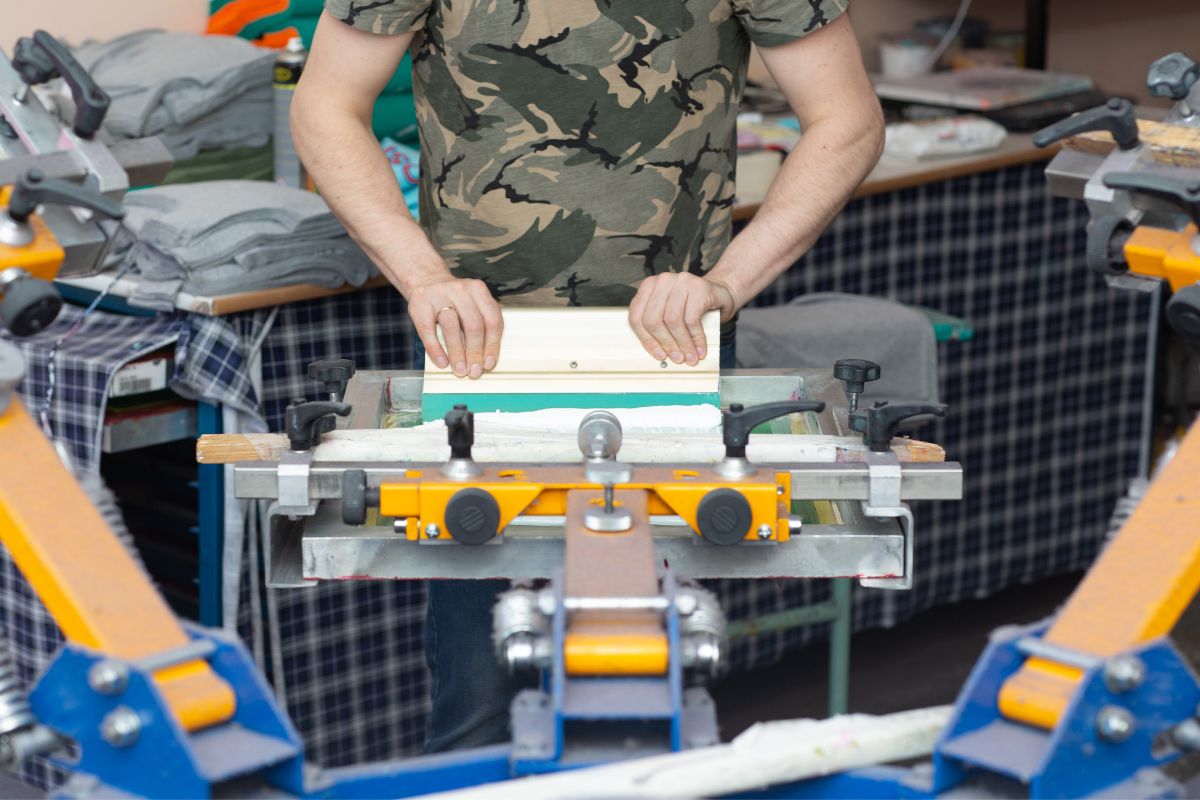
In this section, you will explore the most popular shirt printing techniques used in the industry. Each method offers unique benefits depending on your design needs and the materials you’re working with.
Screen Printing Process
Screen printing is a technique where you push ink through a woven mesh stencil onto fabric. Typically,plastisol ink is used due to its durability andvibrant colors. For each color in your design, a separate screen is required, making it most cost-effective for larger runs.
Heat Transfer Techniques
Heat transfer printing involves transferring a design to a shirt using heat press machines. This method can utilize heat transfer vinyl, which you cut into shapes or designs, then press onto the garment. It’s ideal for small batches and on-demand printing.
DTG Printing Approach
Direct-to-garment (DTG) printing is where you print a digital image directly onto the fabric using inkjet technology. It’s great for detailed designs and does not require setup for different colors, which makes it perfect for low-volume orders with complex images.
Sublimation Methodology
With dye sublimation, your designs are first printed on special heat-resistant paper and then transferred onto the garment using heat. The inks turn into gas and bond with the fabric, resulting in fade-resistant, vibrant prints. Remember that sublimation works best on polyester materials.
Quality and Durability
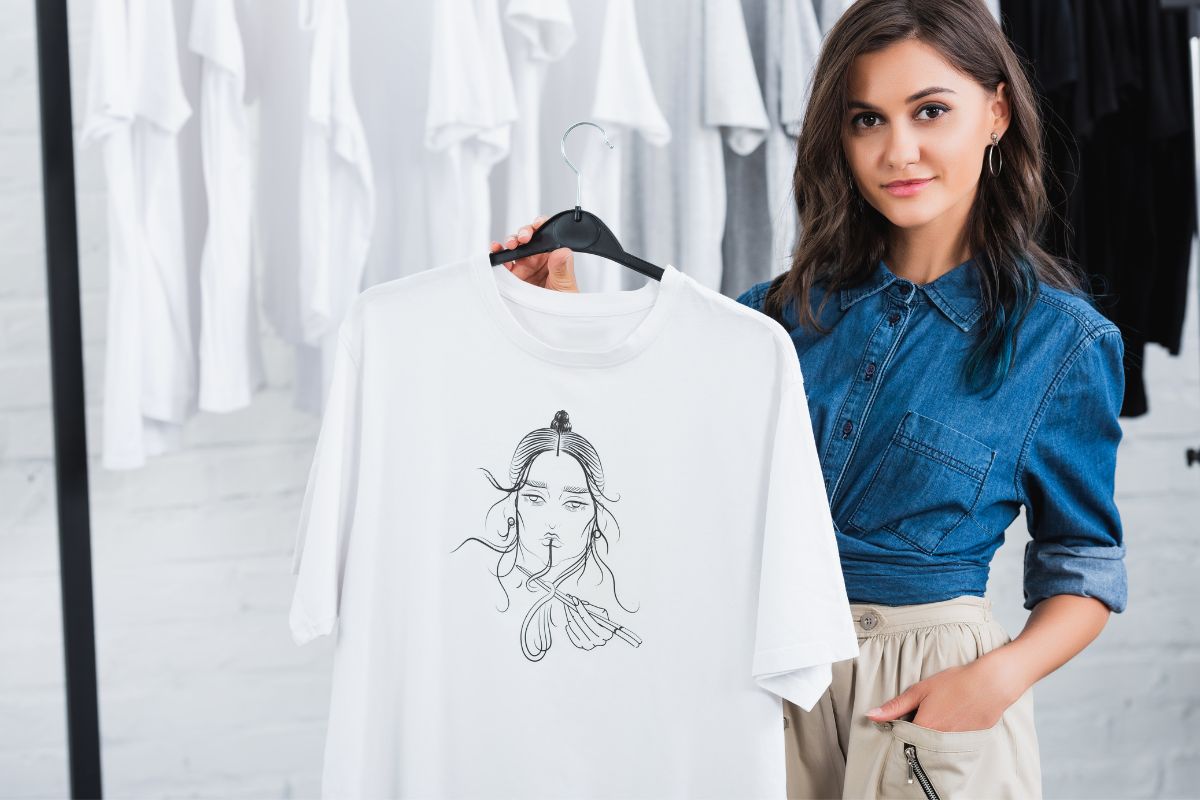
When choosing printing techniques for T-shirts, you should consider both quality and durability as paramount. Durable prints maintain their vibrancy and texture over time, giving you long-lasting satisfaction with every wear.
Assessing Print Longevity
Screen printing provides steadfast durability and can be a cost-effective method for high-volume orders. For instance, the quality of dyestuff used inscreen printing influences the longevity of the print. To ensure your screen-printed shirts remain vibrant, choose high-quality ink systems that adhere strongly to the fabric.
Thermal transfer printing methods, which offer a solvent-free alternative, are evolving to meet the needs for wearable electronics. Their lasting power on textiles is examined in adurability study for such applications, allowing prints that can endure wear and tear from daily use while maintaining a soft feel.
Material Impact on Quality
The choice of fabric significantly affects print quality. For instance, a study comparing the serviceability of a printed finish on different shirt materials underscores that polyester T-shirts with a printed PCM finish can withstand multiple washes without losing quality.
Different materials, from cotton to synthetics, interact uniquely with printing techniques. For vibrant and detailed prints, consider materials that absorb ink well without compromising the fabric’s natural texture. Your ultimate goal should be to strike a balance between a material that feels good on your skin and one that serves as a perfect canvas for durable prints.
Costs and Budgeting

When planning your shirt printing project, understanding the relationship between the costs involved and your budget is crucial. Accurate budgeting can make the difference between a cost-effective order and an expensive one, especially when considering the quantity and economies of scale.
Cost Efficiency
To ensure cost efficiency in shirt printing, consider the type of printing method that best matches your budget. Screen printing is often more affordable for larger runs, as the initial setup cost is distributed across a higher number of shirts, reducing the cost per unit. Techniques likescreen printed electroanalytical sensors can be a cost-effective solution for large orders. For smaller quantities, digital printing might be the better option, although the individual cost is typically higher than screen printing, there’s minimal setup involved, which can be advantageous for short runs.
Quantity and Economies of Scale
The concept of economies of scale applies to shirt printing; ordering in large quantities usually results in a lower cost per shirt. Your budget must accommodate the upfront costs, but overall, the unit price decreases with the order quantity. Here’s a simple breakdown:
- Small orders:
- Higher cost per shirt
- Less upfront budget needed
- Ideal for digital printing
- Large orders:
- Lower cost per shirt
- Greater upfront budget required
- Screen printing becomes more economical
It’s important to calculate the break-even point, where the initial higher costs of setting up a print run for techniques like screen printing begin to pay off. Your choices should reflect a balance between the quantity you require and the budget at your disposal, with an eye towards lowering the overall cost through strategic planning.
Targeted Applications
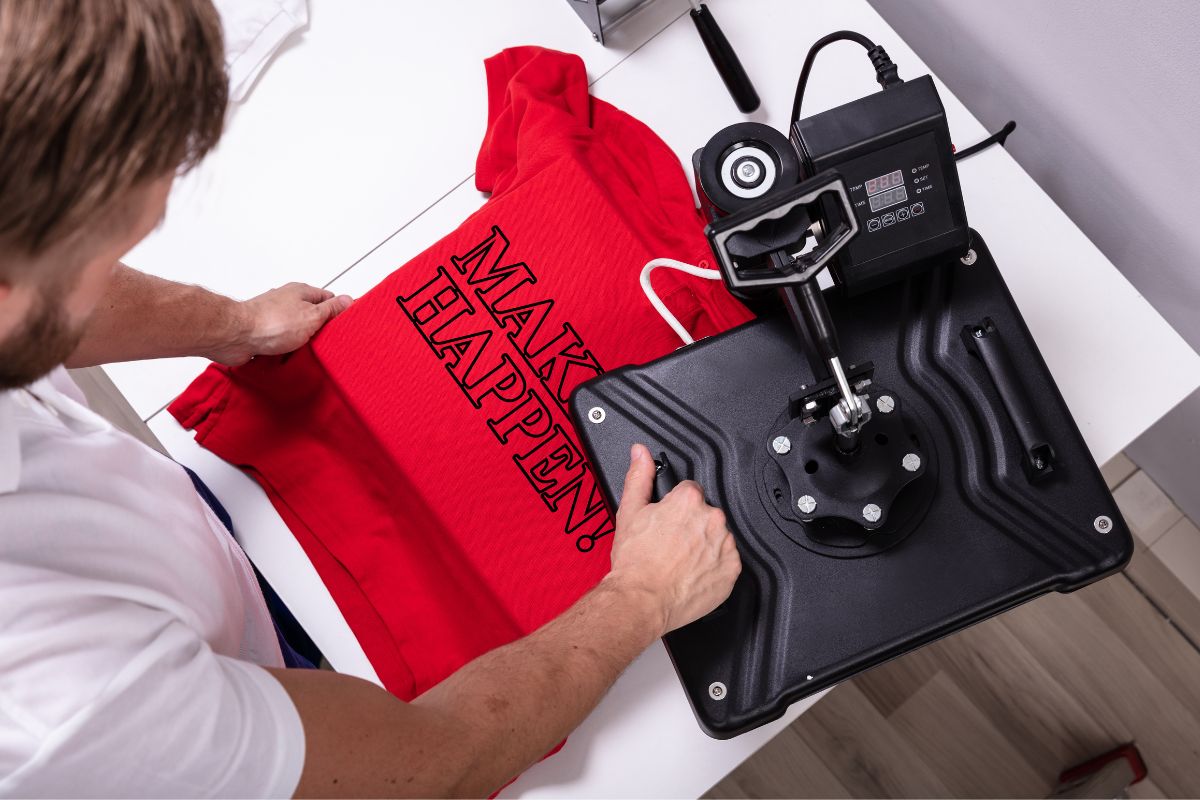
When considering shirt printing, specific applications like merchandising and athletic wear rise above the rest due to their unique requirements in durability and design precision.
Merchandising Options
With merchandising, shirt printing is not just a matter of slapping a logo on fabric. It’s about brand representation and longevity in your customers’ wardrobes. Screen printing excels here, offering high-quality, vivid reproductions of your logos and designs. For instance, a screen-printed shirt for a band’s tour merch can handle numerous washes without fading, keeping your logo prominent and the colors as lively as on the first day.
- Durability: A must for merchandise meant to last.
- Color Vibrancy: Captures eye-catching designs.
- Detail Fidelity: Ensures logos are crisp and recognizable.
Athletic Wear
Athletic wear presents its own challenges, requiring printing methods that stand up to perspiration and stretch while maintaining design integrity. Sublimation printing is often your best bet for sports jerseys, bonding the ink directly to the fabric on a molecular level for designs that won’t peel or fade.
- Stretch-Resistance: Designs flex with the fabric, important for sports jerseys.
- Moisture-Wicking Compatibility: Maintains fabric’s breathing properties.
- Longevity: Survives the rigors of athletic performance and frequent washing.
By selecting the appropriate printing technique for your merchandising and athletic wear, you ensure the endurance and quality of your products, keeping your brand in the game for the long run.
Finishing and Additional Details
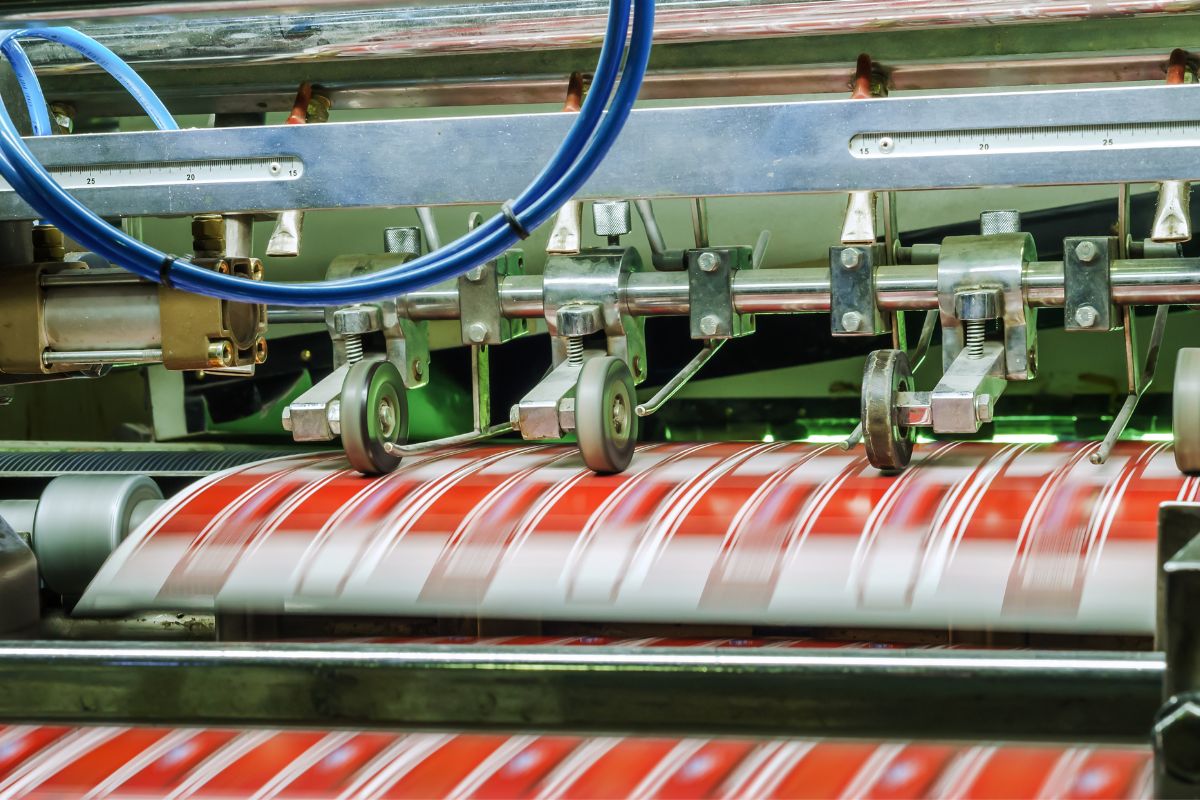
After the main printing process, finishing touches can significantly enhance the quality and uniqueness of yourcustom t-shirts. These final steps often involve handling intricate patterns and adding aesthetic flourishes or functional embellishments.
Handling Complex Designs
For complex designs, such as those requiring all-over printing, a proper finish is crucial to ensure that every detail is crisp and visible. If your artwork includes fine lines or elaborate patterns, specialized screen printing techniques may be employed to maintain the integrity of your design. It’s essential to prep the screen carefully to achieve clean results for intricate graphics.
Special Finishes and Embellishments
Beyond basic printing, you might consider special finishes or embellishments like embroidery to give yourcustom shirts a distinctive edge. Embroidery adds a textured, three-dimensional look, perfect for logos or smaller decorative elements that benefit from a touch of elegance. Moreover, unique finishing options such as foil, metallic, or glow-in-the-dark inks can transform a standard print into a standout piece. Remember that each additional detail, while potentially improving attractiveness, will also influence the overall production time and cost.
Choosing the Right Printing Method
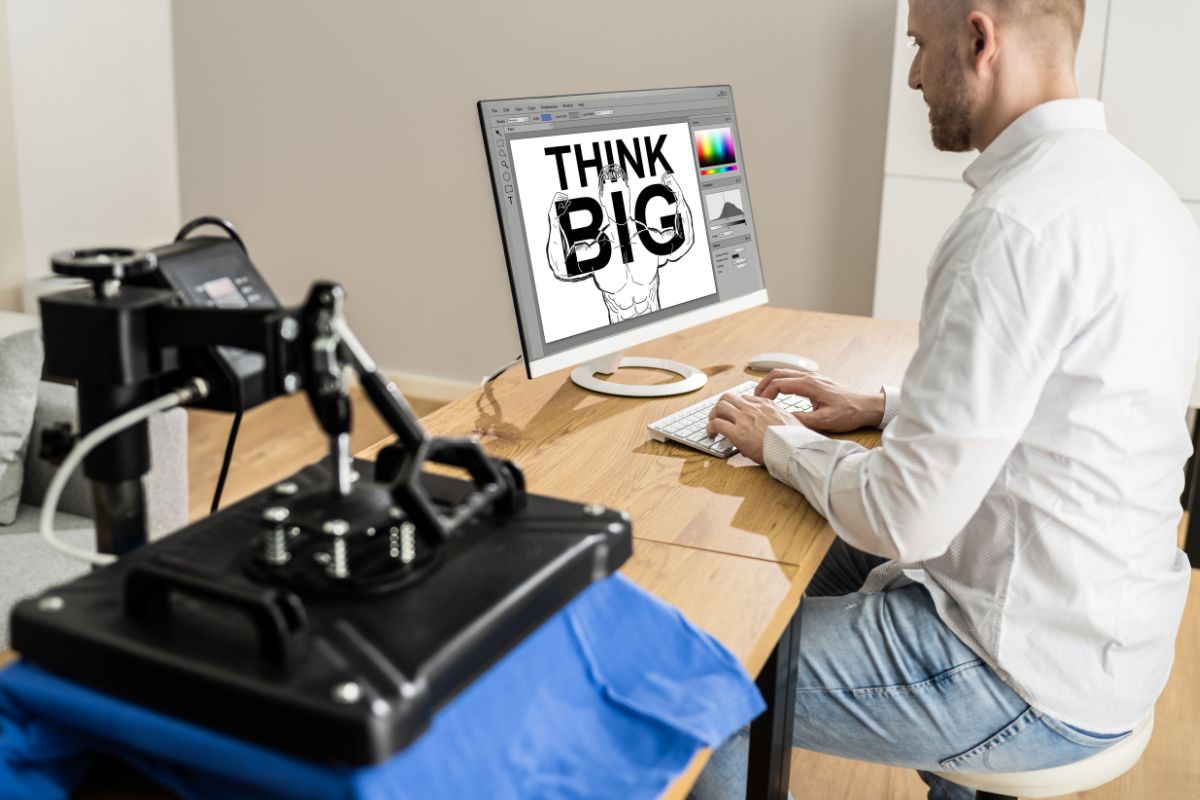
When selecting a printing method for t-shirts, whether for a commercial t-shirt business or a personal project, your priority should be the balance between costs, quality, efficiency, and suitability to design requirements.
Commercial Business Considerations
If you’re in the t-shirt business, adopting the right printing method hinges on production scale and cost-efficiency. For large orders, screen printing is a go-to due to its cost-effectiveness at high volumes. You’ll appreciate that it delivers vibrant colors especially well-suited for custom t–shirts with fewer colors in the design. However, the upfront costs for setup can be higher, which may impact your budget on smaller runs.
For a business model like print-on-demand, digital printing methods, such as Direct to Garment (DTG), become more advantageous. This process excels in detailed graphic reproduction and allows for easy customization with no setup fees. While individual prints may cost more, there are no minimum orders, making it ideal for on-demand printing and personalization.
Personalized Printing Decisions
For your own custom t-shirt creations where uniqueness is key, delve into the specifics of your design to guide your choice. DTG printing offers a great platform for intricate and multi-colored designs without the need for setup. This method allows for a flexible design process with a high level of detail.
However, if your design is simple and you plan on printing in bulk, screen printing may offer a more cost-effective alternative. Keep in mind that every color addition can increase the cost, so designs with fewer colors are more budget-friendly with this method.
When choosing the printing method, remember that each has its own distinct advantages, and your selection should be tailored to your specific needs and the demands of your t-shirt design.
Comparison of Printing Methods
When exploring various shirt printing techniques, crucial aspects like efficiency, costs, and quality dictate your choice. Especially for vibrant prints, the method selected can significantly enhance or reduce the visual appeal.
Pros and Cons Analysis
Screen Printing:
- Pros:
- Produces high-quality, vibrant prints that are ideal for bulk orders.
- Generally more cost-effective for large batches due to economies of scale.
- Offers durability and longevity in designs.
- Cons:
- Not as efficient for small runs due to the initial setup required.
- Limited in color complexity; each color adds to the cost and production time.
Direct to Garment (DTG) Printing:
- Pros:
- Capable of printing detailed designs with a wide color range.
- More efficient for small quantities or one-offs with minimal setup.
- Cons:
- Higher costs for larger orders, making it less economical than screen printing.
- Print longevity may be shorter compared to screen prints.
Heat Transfer:
- Pros:
- Allows for full-color prints and photo-image quality.
- Good for small runs and customized individual prints.
- Cons:
- Can result in prints that feel heavy or have an unnatural stiffness.
- Heat-applied designs may crack or fade quicker over time.
Practical Use Cases
For bulk orders where cost is a major factor and the design is not overly complex, screen printing is your best choice for vibrant and durable results.
If detail and color variety are paramount, especially in small to medium quantities, DTG printing excels. It’s suited for intricate designs that screen printing cannot achieve.
For custom or individual shirts, particularly if they involve complex images or photographs, heat transfer methods are ideal. However, if you seek longevity and often wash the garment, consider the potential quality decline.
Maintenance and Aftercare

Taking care of your printed shirts properly is essential to ensure the prints remain vibrant and long-lasting. Maintenance is straightforward, but attention to detail can significantly extend the life of your prints.
Washing:
- Turn Inside Out: Protect the print by flipping the shirt inside out before washing.
- Cold Water: Use cold water to prevent fading and reduce the risk of print peeling.
- Gentle Cycle: A gentle wash cycle minimizes the stress on the print.
Drying:
- Air Dry: Hang your shirts to dry or lay them flat to avoid heat damage.
- No Dryer: If you must use a dryer, opt for a low heat setting, but air drying is best.
Ironing:
- Avoid Direct Heat: Never iron directly on the print. If you must iron the shirt, do so inside out or place a protective cloth between the print and the iron.
For screen-printed shirts, maintenance becomes even more crucial. The inks used can crack or fade with improper care.
- Mild Detergent: Choose mild detergents without bleaching agents.
- Avoid Folding: Instead of folding screen-printed tees, hang them to prevent creasing on the print.
These simple steps will help maintain the quality and appearance of your printed shirts. Treat them well, and they will stay looking fresh and professional for outings to come.
Advancements in Shirt Printing Technology
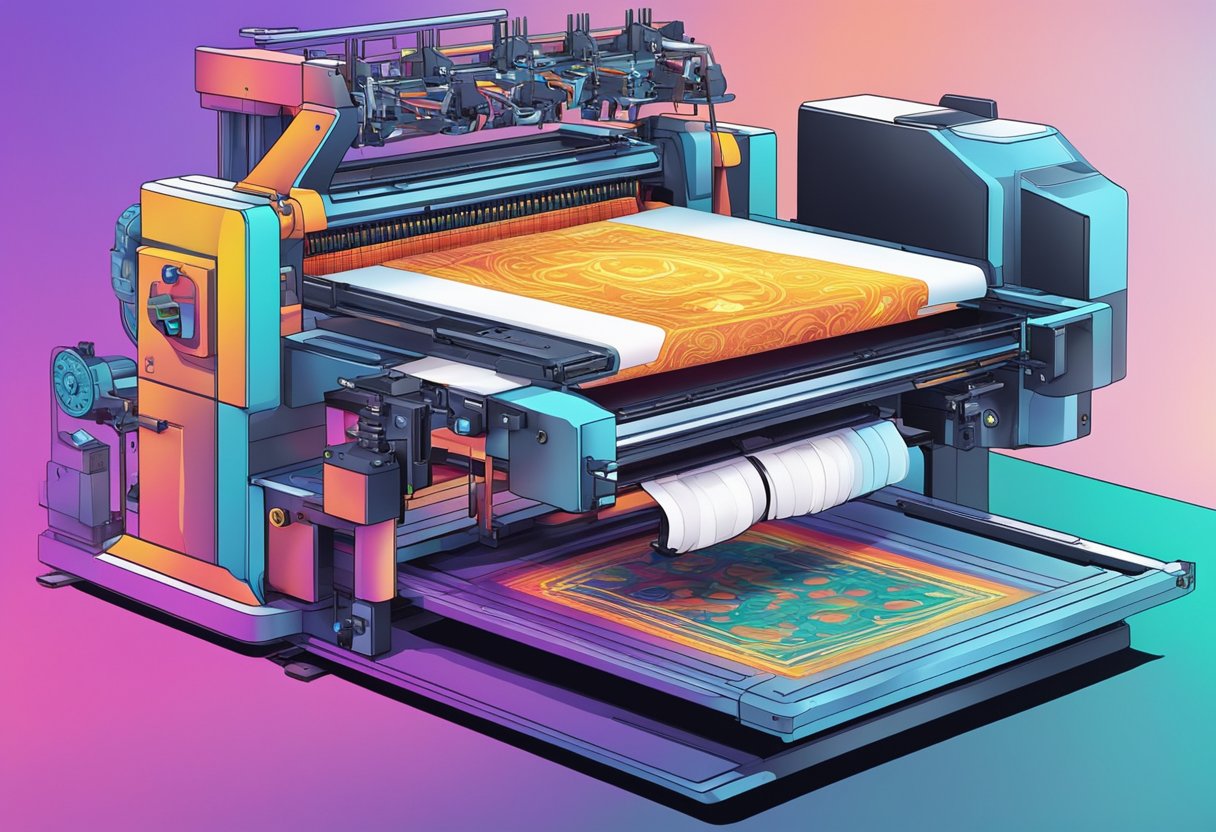
Over the past few years, the landscape of shirt printing has undergone significant transformations thanks to advanced technologies. Your understanding of the traditional screen printing process can now be expanded to include a suite of innovative methods that enhance both quality and efficiency.
Direct-to-Garment (DTG) Printing: This process prints directly onto textiles using specialized inkjet technology, providing you with the ability to produce high-quality, detailed designs on demand. The key advantage is its capacity for customization, making it ideal for small batches with intricate multi-colored designs.
Dye-Sublimation Printing: It’s a technique where you can transfer a design onto a shirt through heat. It’s best for polyester and polymer-coated substrates, offering vibrant color and print durability.
Direct-to-Film (DTF) Printing: DTF allows you to print a design onto a special film which is then transferred onto the fabric. This method gives you flexibility across a wide range of fabrics, not limited to those compatible with DTG, and retains a high-quality finish.
Advanced technologies in printing also come with improved sustainability, as many modern printers reduce waste and energy consumption. You’re no longer restricted by the limitations of older technologies, as these advancements allow for greater creativity and a smaller environmental footprint.
To sum up, here’s what you can expect with modern shirt printing:
- Customization: Create unique, detailed designs with ease
- Quality: Enjoy durable prints with vibrant colors
- Flexibility: Print on various types of fabrics
- Sustainability: Benefit from eco-friendly printing practices
Embracing these technologies will enable you to produce high-quality, custom apparel that meets the demands of an ever-changing market.
Legal and Ethical Considerations

When venturing into shirt printing, you must navigate a maze of copyright issues that protect original artwork. Copyright laws ensure that creators have exclusive rights to their work. Without permission, using someone else’s design or even elements that are too similar to a protected work can lead to costly legal disputes.
- Understand Copyright: Ensure your designs are original or you have obtained the right to use existing graphics.
- Seek Permission: If you wish to use someone else’s design, secure a licensing agreement.
- Avoid Infringement: Innocent mistakes can still be infringement. Educate yourself to recognize the fine line.
Remember, ethical practices in shirt printing not only help avoid legal issues but also build your reputation. Ethical considerations include:
- Respect for Originality: Always honor the creativity and labor that artists invest in their work.
- Transparency with Customers: Be honest about the source and originality of your shirt designs.
- Fair Compensation: If you’re collaborating with a designer, ensure fair payment for their work.
Lastly, remember to:
- Think before you print. Your choice of images, phrases, or symbols should be considerate of diverse backgrounds and cultures to avoid unintended offense.
By keeping these points in mind, you help foster a fair and creative environment for shirt printing.
Marketing and Branding Strategies
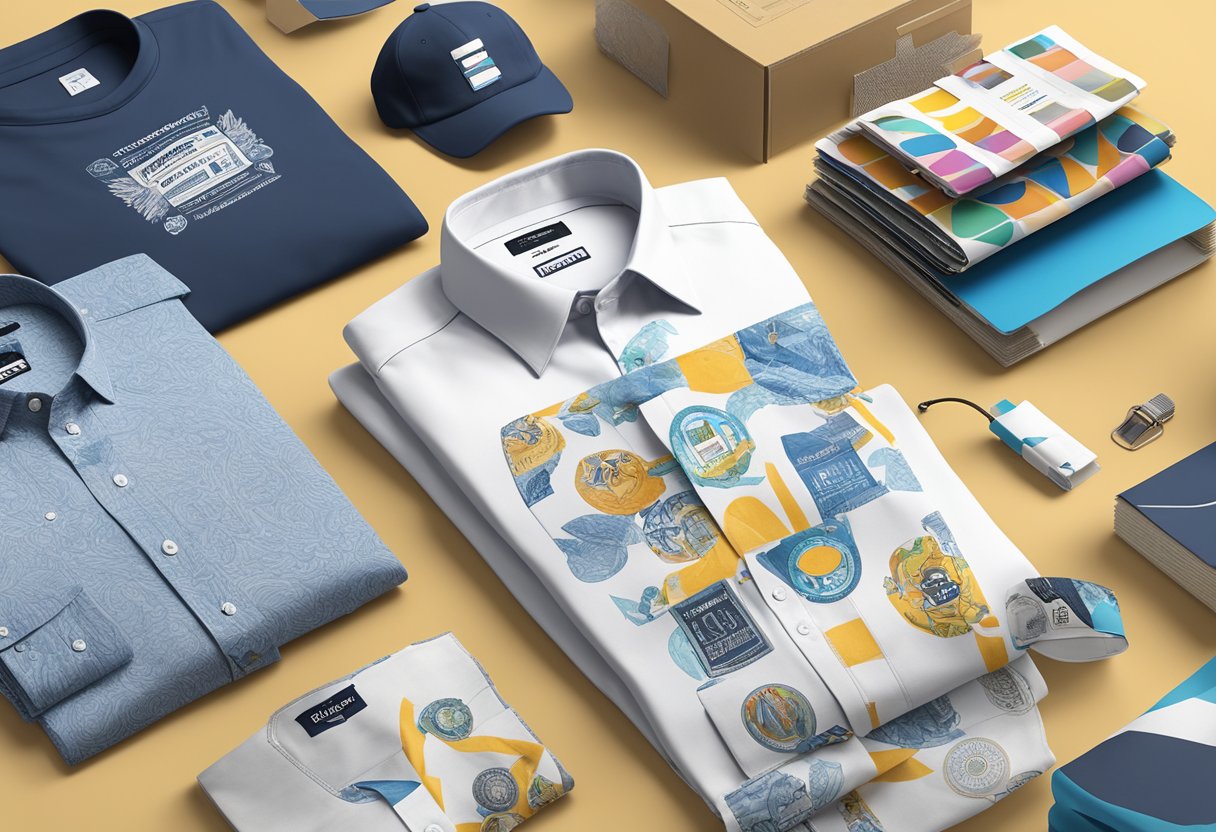
When launching your clothing line, understanding the intersection of marketing and branding strategies is pivotal for your success. Your shirt printing business, like any other, requires a comprehensive marketing plan to boost brand recognition and drive sales.
Marketing Tactics:
- Social Media Campaigns: Utilize platforms where your target market is most active. Engaging posts with high-quality images of your printed shirts can generate buzz and foster brand loyalty.
- Influencer Partnerships: Partner with influencers to wear and promote your brand, leveraging their followings for increased visibility.
Building Brand Recognition:
- Consistent Visuals: Ensure your printed designs have a consistent theme that aligns with your brand values. This helps customers quickly identify your products.
- Quality Deliverables: Your printing quality should never waver; it strengthens customer trust and reinforces your brand’s reputation.
- Storytelling: Share the story behind your designs and brand. Customers often connect with brands that have a compelling narrative.
| Marketing Area | Tactics | Goal |
| Online | SEO, targeted ads, e-commerce | Drive web sales |
| Offline | Event sponsorships, pop-ups | Increase physical presence |
Remember, your marketing and branding efforts should reflect a clear message and identity. Your strategies should be adaptable, regularly assessing the effectiveness of your campaigns and making necessary adjustments to ensure you remain relevant in the competitive market of shirt printing.
Sustainability and Environmental Impact
When you consider various shirt printing methods, understanding the sustainability and environmental impact is crucial. Traditional screen printing, for instance, commonly uses plastisol inks containing PVC and phthalates, which are harmful to the environment. These methods generate significant waste and can lead to water pollution.
Eco-Friendly Practices
To reduce the environmental footprint of shirt printing, you might explore:
- Water-based inks: These are less toxic and easier to clean, reducing chemical waste.
- Organic cotton: Grows without pesticides, supporting a cleaner production process.
- Direct-to-garment (DTG): Usually, more eco-friendly as it consumes less water and energy.
Environmental Considerations
| Printing Method | Waste Produced | Energy Consumption | Chemical Use |
| Screen Printing | High | Moderate | High |
| DTG | Low | Low | Low |
| Dye Sublimation | Moderate | Moderate | Moderate |
It’s noted that even eco-friendly practices such as using recycled polyester for T-shirts can still impact sustainability due to the energy used in recycling processes. Consider the entire lifecycle, including the biodegradability of materials which can affect environmental sustainability in the long run.
Your choice in materials and processes can make a difference. Fabric dyes and fixatives in printing can contain heavy metals and other toxic substances which should be minimized in your practice. By favoring sustainable options, you contribute positively to environmental conservation and the health of ecosystems impacted by the textile industry.
Frequently Asked Questions
In this section, you’ll find concise answers to common inquiries regarding techniques, materials, and methods for t-shirt printing.
What are the primary techniques for shirt printing?
The primary shirt printing techniques include screen printing, which is favored for its durability and suitability for high-volume orders, and digital printing, ideal for detailed designs and small quantities. Other notable methods are heat transfer and sublimation printing.
Which printing method is most durable for t-shirts?
For durability, screen printing is the gold standard in t-shirt printing as it lays down a thick layer of ink that adheres well to fabric, making it resilient to fading and peeling over time.
What materials are needed for various t-shirt printing methods?
Each printing method requires specific materials: screen printing needs screens, ink, and a squeegee; digital printing operates with a specialized printer and ink compatible with fabric. Heat transfer requires heat press machines and transfer paper, whereas sublimation printing demands sublimation ink, paper, and a heat press.
How do you print on t-shirts professionally?
To print on t-shirts professionally, you should invest in quality screen printing equipment or a high-resolution digital fabric printer, depending on your chosen technique. Mastery over printing processes and consistent practice are essential for achieving professional results.
What equipment is essential for starting a shirt printing business?
Starting a shirt printing business, you will need a screen printing press or a digital fabric printer, a conveyor dryer, a flash cure unit, washout booths, and exposure units for screen creation. Also, consider a computer with design software to create and process artwork.
What is the best method for printing t-shirts at home?
For home use, heat transfer or direct-to-garment (DTG) printing are the best methods. Heat transfer allows you to use a regular inkjet printer and transfer paper, while DTG requires a DTG printer. Both are suitable for low-volume printing and are relatively user-friendly.

